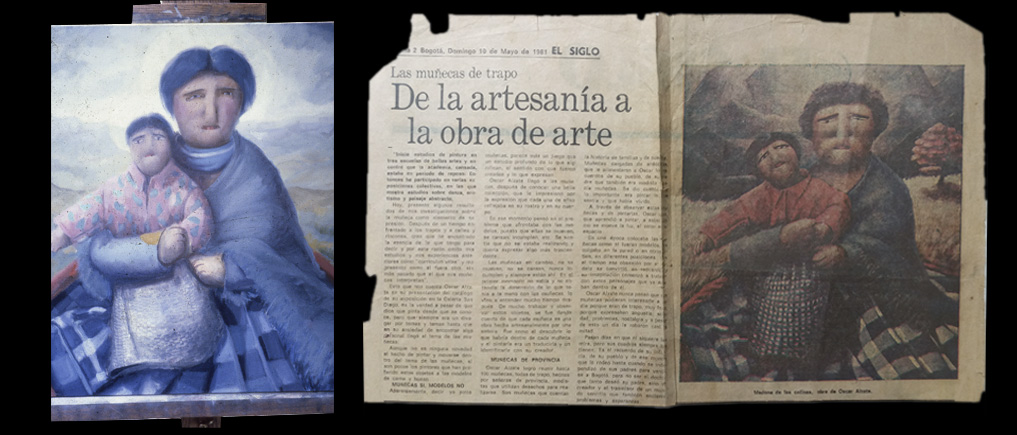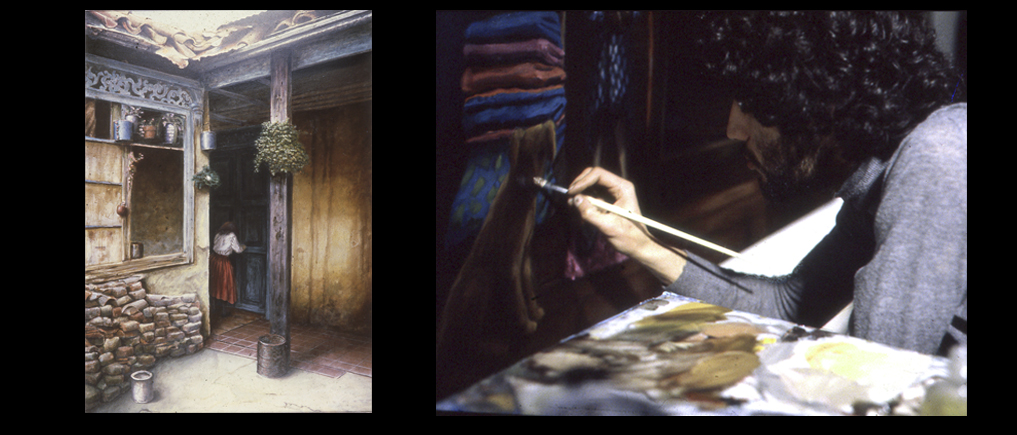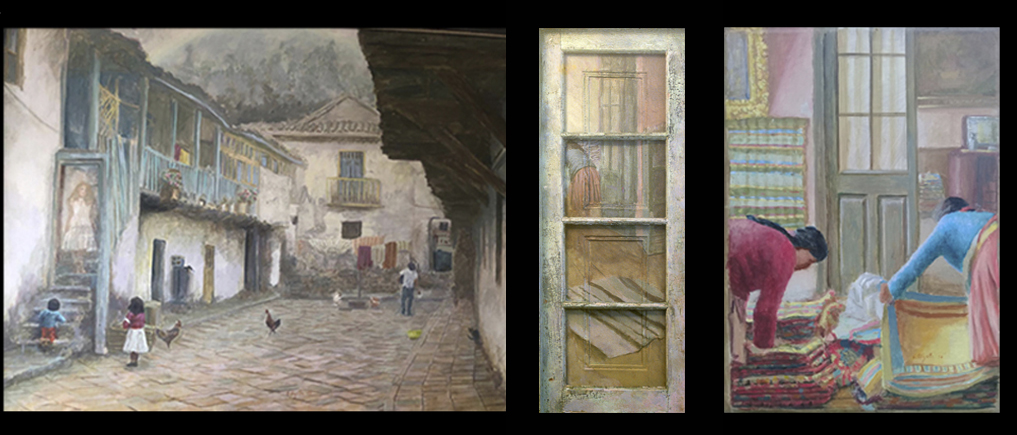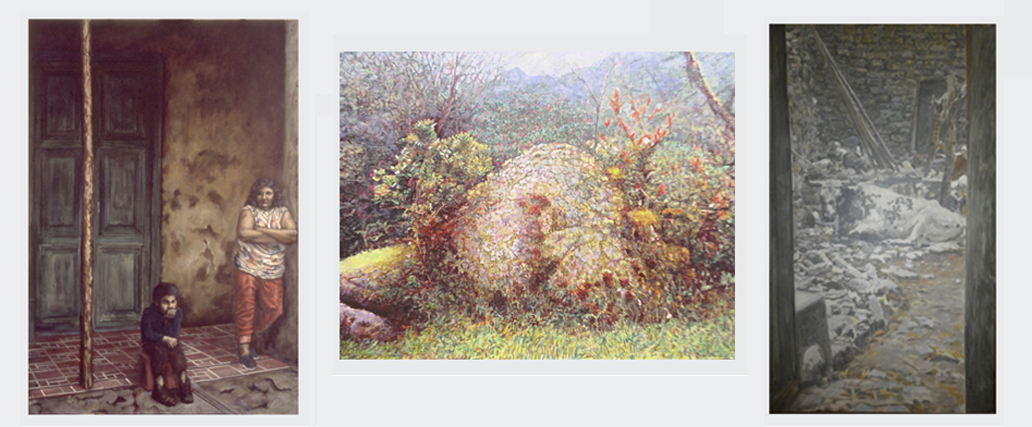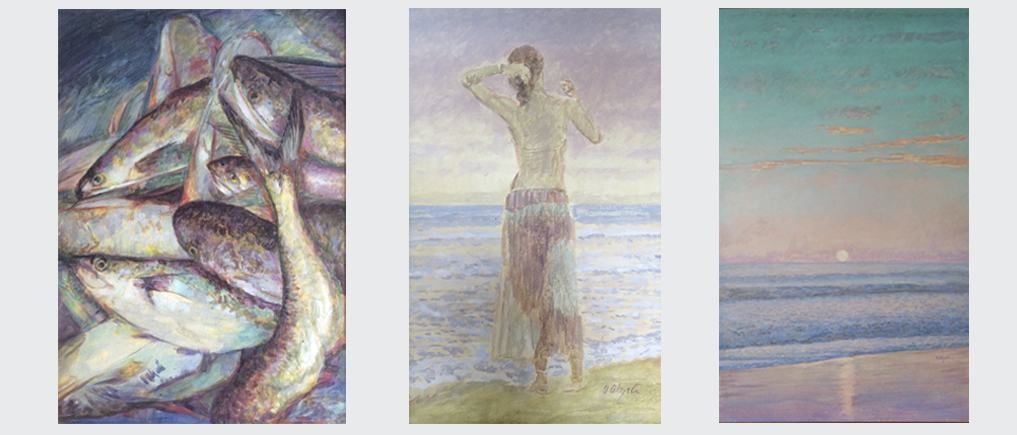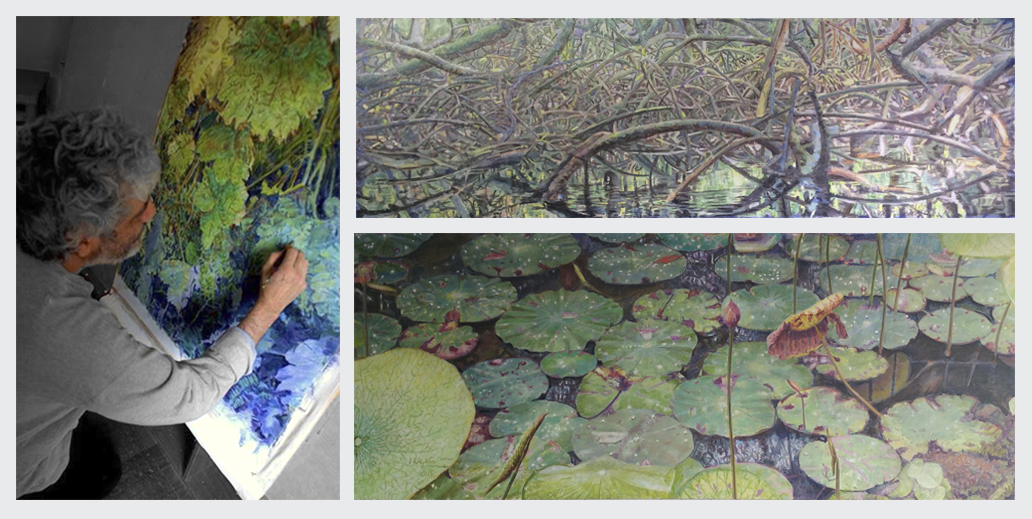Beginnings
Oscar Alzate was born in Palmira, Valle. He began studying painting in three fine arts schools before becoming interested in cinema and finally embarking on the path of anthropological photography. This form of expression stimulated in him an attentive look at the relationship between light and colour, in addition to taking him to travel the rural areas of Colombia for two years, in search of themes to portray.
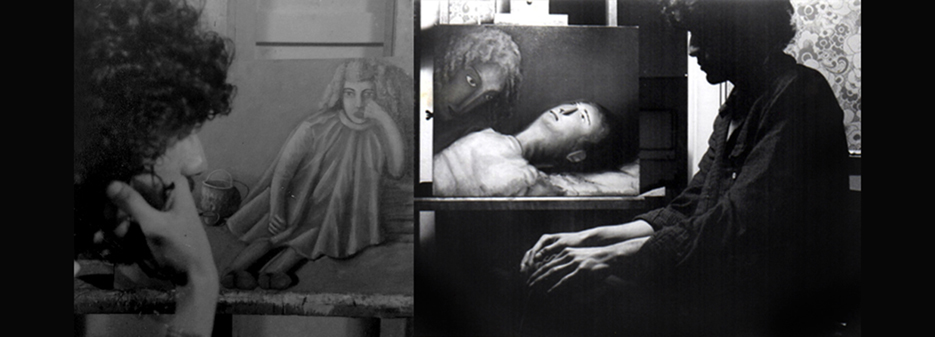
He made one of his trips with Gloria Triana and Toto la Momposina, to the Lower Magdalena, and Alzate as a photographer, they went on a search for the songs and dances of the river.

Left to right Toto la Momposina, Gloria Triana, Oscar Alzate, Bajo Magdalena farmers.




